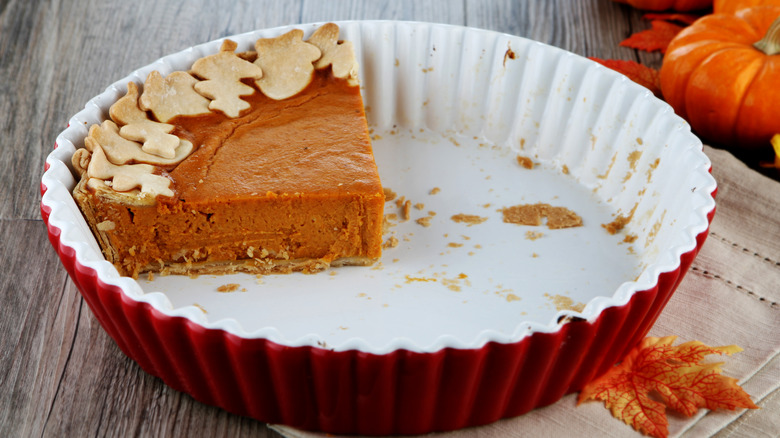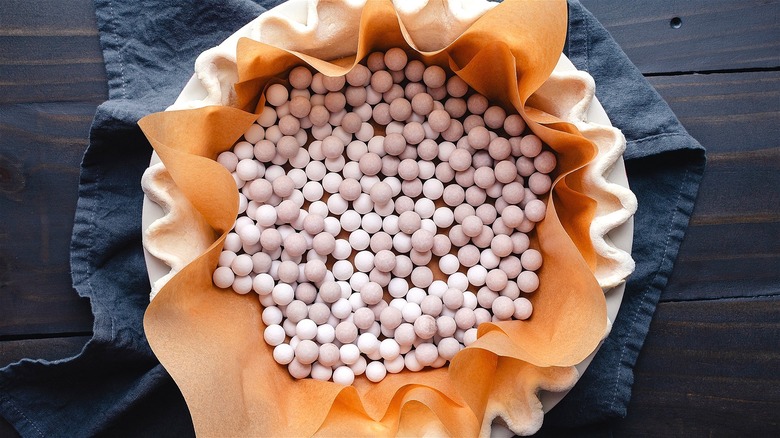The Trick For Storing Leftover Pie So It Doesn't Get Soggy
When you make a homemade pie, if luck is on your side, you'll be rewarded with plenty of leftovers to enjoy at a later date. However, the last thing you want is the bottom of your bourbon-infused pecan pie to turn into mush. Thankfully, CEO and co-founder of Heilala Vanilla, Jennifer Boggiss, shared some worthwhile tips with Food Republic on how to properly store leftover pie.
Boggiss said, "To keep your leftover pie tasting just as delicious as the first slice, wrap it tightly in foil or plastic wrap and store it in the fridge." When it comes to storage, pies with fillings that contain eggs or cream should always be refrigerated upon baking and cooling, while fruit pies are a bit more flexible. While fruity varieties can be covered and stored at room temperature for 48 hours, they may last up to four days when stored in your refrigerator.
The cold temperature of your fridge slows the moisture of your filling from seeping outward and sogging things up. Better yet, refrigeration helps to thicken many pie fillings which further prevents soggy pie crust. Boggiss adds, "For fruit pies, slipping a bit of parchment paper under the crust works wonders to absorb any extra moisture." Consider transferring any leftovers to a clean container lined with parchment and topping it off with foil.
How to ward off soggy pie crust from the start
While wrapping pie in plastic wrap or foil may prevent mushy leftovers, you still need to take extra steps to prevent your pie crust from turning soft in the first place. Whether you like to go the fancy route or skip the fussy lattice and give pies an easier topping made from oats, the base of most pies is either flaky and buttery pie crust or an easy-to-assemble graham cracker crust. A flaky crust is particularly disappointing when soggy, so pre-cooking it can help it stand up to your filling.
Before assembling your pie, blind or par-bake your pie crust with pie weights on top, to ensure the filling doesn't absorb into the raw dough and cause uneven cooking. For extra assurance, brush your crust with egg wash or sprinkle on a bit of flour and sugar before baking. The egg or flour-sugar mixture provide barriers between the moist fillings and flaky crust. Furthermore, bake your pie directly on a metal baking sheet or use a metal pie pan, which conducts heat faster and more effectively than pans made of glass or ceramic.
Taking these extra steps leads to a more stable crust, but still allow your pie to reach room temperature before slicing and storing. Jennifer Boggiss cautions, "Let your pie cool completely before wrapping or storing it— resist the temptation to rush this step! Warm pie releases steam, which can get trapped and turn your beautifully baked crust soggy."


